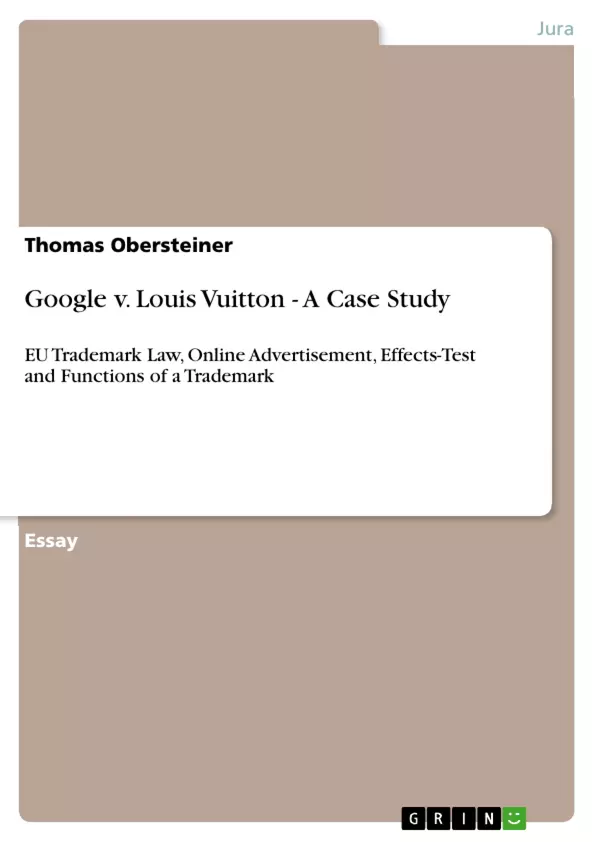This essay addresses one of the most famous disputes over the use of trademarks as keywords in online search engines: Google v Louis Vuitton. It arose over a crucial question for the future of trademark protection and online advertising. A description of the parties and the background is followed by an examination of the preliminary ruling issued by the European Court of Justice (ECJ) in March 2010 and the legal and economic consequences deriving from it. Several experts have commented on this controversial decision and the paper will provide an overview of their opinions. The last part will consist of concluding remarks by the author.
Inhaltsverzeichnis
- 1. Introduction
- 2. The parties and the issue at stake
- 3. The ECJ's ruling
- legal and economic impacts
- 4. Views and critique expressed by commentators
- 5. Conclusion
Zielsetzung und Themenschwerpunkte
Dieser Essay befasst sich mit einem der bekanntesten Rechtsstreitigkeiten über die Verwendung von Marken als Keywords in Online-Suchmaschinen: Google v. Louis Vuitton. Er entstand aus einer entscheidenden Frage für die Zukunft des Markenschutzes und der Online-Werbung. Nach einer Beschreibung der Parteien und des Hintergrunds wird das Vorabentscheidungsverfahren des Europäischen Gerichtshofs (EuGH) im März 2010 und die daraus resultierenden rechtlichen und wirtschaftlichen Folgen untersucht. Mehrere Experten haben sich zu dieser umstrittenen Entscheidung geäußert, und das Papier gibt einen Überblick über ihre Meinungen. Der letzte Teil besteht aus Schlussfolgerungen des Autors.
- Die Verwendung von Marken als Keywords in Online-Suchmaschinen
- Der Einfluss des EuGH-Urteils auf den Markenschutz
- Die rechtlichen und wirtschaftlichen Folgen des Urteils
- Die Meinungen von Experten zum Urteil
- Die Auswirkungen des Urteils auf die Online-Werbung
Zusammenfassung der Kapitel
Die Einleitung stellt den Rechtsstreit zwischen Louis Vuitton und Google vor und erläutert die Hintergründe. Kapitel 2 beschreibt die Parteien und die Streitfrage. Kapitel 3 analysiert die Entscheidung des EuGH und ihre Auswirkungen auf den Markenschutz und die Online-Werbung. Kapitel 4 präsentiert verschiedene Meinungen und Kritikpunkte von Experten zum EuGH-Urteil. Die Schlussfolgerung fasst die Ergebnisse des Essays zusammen und diskutiert mögliche zukünftige Entwicklungen.
Schlüsselwörter
Markenrecht, Online-Werbung, Suchmaschinen, Keywords, EuGH, Vorabentscheidung, Google, Louis Vuitton, Markenverletzung, Markenfunktionen, Auswirkungen, Kritik, Meinungen, zukünftige Entwicklungen.
- Quote paper
- Thomas Obersteiner (Author), 2011, Google v. Louis Vuitton - A Case Study, Munich, GRIN Verlag, https://www.grin.com/document/170737



